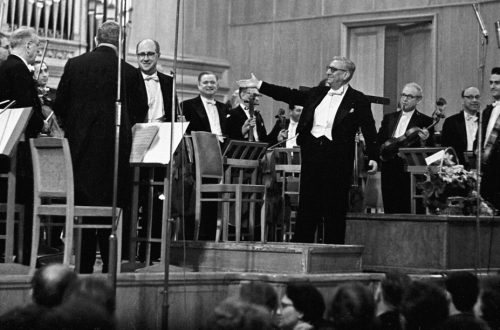
Egon Wellesz |
Egon Welles

He tohunga puoro me te kaitito waiata Austrian. Doctor of Philosophy (1908). I ako ia i Vienna me G. Adler (musicology) me K. Fryuling (piano, harmony) i te whare wananga, me A. Schoenberg (counterpoint, titonga).
I te tau 1911-15 i whakaako ia i te hitori o te waiata i te New Conservatory, mai i te tau 1913 – i te Whare Wananga o Vienna (he ahorangi mai i te tau 1929).
I muri i te hopukina o Ateria e Nazi Germany, mai i te tau 1938 ka noho ia ki Ingarangi. I whakahaerehia e ia nga mahi ako me nga mahi putaiao i te Royal College of Music i Raanana, i Cambridge, Oxford (na ia i arahi te rangahau mo nga waiata Byzantine), nga Whare Wananga o Edinburgh, me te Whare Wananga o Princeton (USA).
Ko Welles tetahi o nga kairangahau nui rawa atu mo nga puoro Byzantine; kaiwhakarewa o te Institute o Byzantine Music i te Vienna National Library (1932), whai wāhi i roto i te mahi o te Byzantine Research Institute i Dumbarton Oaks (USA).
Ko tetahi o nga kaihanga o te putanga nui "Monumenta musicae Byzantinae" ("Monumenta musicae Byzantinae"), he maha nga pukapuka i whakaritea e ia takitahi. I te wa ano me G. Tilyard, ka whakatauhia e ia te tohu Byzantine o te mea e kiia ana. "Wawaenganui" me te whakaatu i nga tikanga titonga o te waiata Byzantine, na reira ka whakatau i tetahi waahanga hou o te Byzantology puoro.
I koha hei kaituhi me te ētita ki te The New Oxford History of Music; i tuhia he mokowhiti mo A. Schoenberg, i whakaputa i nga tuhinga me nga pukapuka mo te kura hou o Viennese.
Hei kaitito waiata, i whanake ia i raro i te mana o G. Mahler me Schoenberg. I tuhi opera me nga poipoi, ko te nuinga i runga i nga kaupapa o nga aitua Kariki tawhito, i mahia i nga tau 1920. i roto i nga whare tapere o nga pa o Tiamana; i roto ia ratou ko "Princess Girnar" (1921), "Alcestis" (1924), "Te patunga tapu o te herehere" ("Opferung der Gefangenen", 1926), "Joke, Cunning and Revenge" ("Scherz, List und Rache" , a JW Goethe, 1928) me etahi atu; paoro – “Te Miracle of Diana” (“Das Wunder der Diana”, 1924), “Persian Ballet” (1924), “Achilles on Skyros” (1927), etc.
Welles – kaituhi 5 waiata waiata (1945-58) a whiti waiata – “Pre-Spring” (“Vorfrühling”, 1912), “Solemn March” (1929), “Spells of Prospero” (“Prosperos Beschwörungen”, i runga i “The Tempest” na Shakespeare, 1938), cantata with orchestra, tae atu ki te "Middle of Life" ("Mitte des Lebens", 1932); mo te kaiwaiata me te orchestra – he huringa i runga i nga kupu a Rilke “Te Inoi a nga kotiro ki te Whaea o te Atua” (“Gebet der Mudchen zur Maria”, 1909), concerto mo te piana me te kaiwaiata (1935), 8 aho whawhati me etahi atu mahi taputapu ruma, waiata, tini, moteti, waiata.
Ngā tito: Ko te timatanga o te waiata Baroque me te timatanga o te Opera i Vienna, W., 1922; Waiata a te Ekalesia Byzantine, Breslau, 1927; Nga huānga o te Rawhiti i roto i te waiata o te Tai Hauauru, Boston, 1947, Cph., 1967; A history of Byzantine music and hymnography, Oxf., 1949, 1961; The Music of the Byzantine Church, Cologne, 1959; The New Instrumentation, Vols. 1-2, В., 1928-29; Tuhinga mo Opera, L., 1950; Ko te takenga mai o te punaha reo tekau ma rua a Schönberg, Wash., 1958; Nga Himene o te Hahi ki te Rawhiti, Basel, 1962.
Tohutoro: Schollum R., Egon Wellesz, W., 1964.
Yu.V. Keldysh





